Katherine Watts is a 2.5-year-old little girl in Virginia who’s going places. Figuratively and literally.
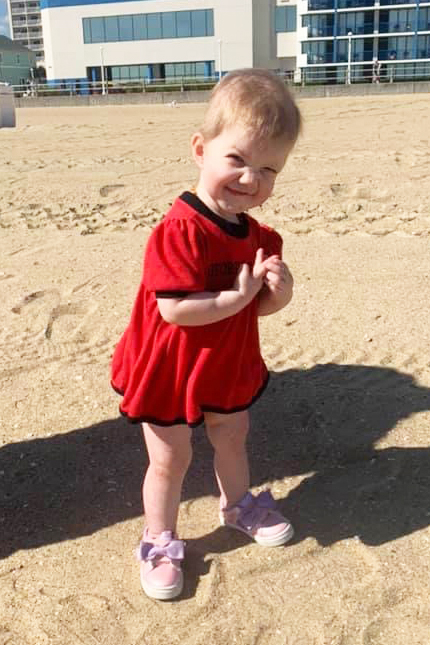
According to her mom, Jodi, she’s the curious child for whom they have to baby proof the house for.
“She just has this aura about her! She’s like, ‘I love people. I love being the center of attention!’”
This little lady is in constant motion and is also quite the fighter.
Since she was in the womb, she’s had a team of doctors who care for her many, complex symptoms caused by Goltz syndrome.
A Baby with Medical Challenges
Jodi and her husband, Michael, knew at 22 weeks of the pregnancy that something about their second child may be different. From an ultrasound, the doctor discovered that the baby’s bladder was distended. A neonatal specialist and obstetrician continued to monitor it but couldn’t explain what was causing it. The baby was also measuring small at six months in utero. But the baby’s older sister, Georgia, had also been petite so the couple wasn’t too concerned about her size.
Because of these two issues, the docs scheduled Jodi for a C-section at 38 weeks. It was December of 2019, right before the pandemic started.
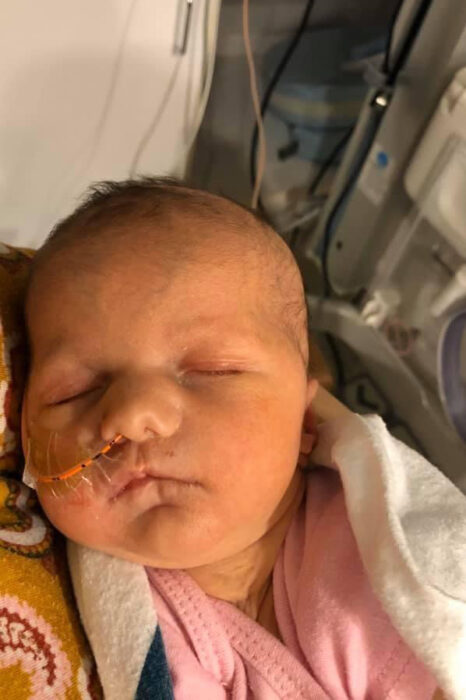
From the moment Katherine was born, things happened quickly. Michael cut the umbilical cord, Then, their sweet baby girl was quickly whisked away to the newborn intensive care unit (NICU). She quickly received a breathing tube and feeding tube.
“When she was born, apparently, she was having trouble breathing, from what I understand, so they had to get her breathing back up,” Jodi recalled. “We sort of knew that she may have some kidney and bladder issues, but we weren’t prepared for what she would look like, obviously, because nothing ever showed up on the ultrasounds. And we didn’t even really know what she looked like—it just all happened that fast. Basically, what happened when she was born was that the entire left side of her body didn’t develop like the right side and her left eye looked like it was crossed.”
These asymmetrical features, with the right and left side of the body being affected differently, are typical characteristics of Goltz syndrome. This type of ectodermal dysplasia is very complex and affects many other bodily systems in addition to ectodermal structures.
Katherine’s Goltz Features
For Katherine, she was born with patches of skin under her arm pit and on the back of her leg. The top layer of skin didn’t develop and looked like blisters. She had a cleft on her left hand between her thumb and pointer finger, fused toes, and papillomas around her mouth.
Also, Katherine’s left side of her body was weaker than the right. This made breastfeeding difficult since she couldn’t latch on with weak left facial muscles. Doctors ran an MRI, CT scan and numerous tests in those first days to identify all of Katherine’s issues. The doctors had never treated a baby with this combination of symptoms and had to research to learn more. All sorts of different doctors visited Katherine to evaluate her.
Finally, when Katherine was about 2-weeks-old, the doctors gave them the tentative diagnosis of Goltz syndrome, which is also known as focal dermal hypoplasia. They told the family they would need genetic testing to confirm the diagnosis.
Amidst the whirlwhind, Jodi and Michael immediately took action for their baby girl.
“Because it was so rare we’re like, ‘Who is here to help us?’ We obviously had no idea about the NFED at the time. I think it would have been a lot different if she had been born with something that was more common. Because the doctors and nurses didn’t know about this, we had to do our own research. Because it is so rare and there was not a lot on it, at least not that we saw at the time, it was hard initially to navigate what our lives would look like. Would she be handicapped in some way? We had all these questions.”
But we learned very quickly to just take one day at a time. We knew we couldn’t dwell on what the future would look like, because nobody knows what the future looks like. We also learned very quickly what a fighter Katherine is.
– Jodi Watts
Michael was experienced in having loved ones with medical issues. His father and four siblings—all had different disabilities (not Goltz syndrome). When he learned about Katherine’s syndrome, Jodi says he was taken aback by the fact that it was such a rare condition. But, but he was like, “Well, I’m used to it. Let’s do it.”
Navigating Healthcare in a Pandemic
Katherine stayed in the hospital for several weeks while the team of doctors and therapists worked to get a handle on all of her needs. Baby Katherine had physical therapy, occupational therapy, and speech therapy each day. The speech therapy was to help their little girl better latch for breastfeeding since the left side of her face and mouth was weak.
Jodi and Michael traveled 45 minutes back and forth from the hospital to their home each day while Jodi was recovering from her C-section and the couple cared for Georgia, their daughter at home. Luckily, Jodi’s family provided a great support system to help the exhausted parents through these challenging weeks.
With so many care providers involved in the treatment, communication often proved challenging. Jodi said she felt so useless at the time. She learned quickly that she and Michael had to be their child’s advocate and speak up for what they wanted.
“I know these are medical professionals, and it’s their job to take care of my daughter, but we didn’t feel like they were giving Katherine credit for how she was progressing. She was doing what they were telling her to do. I never expected to have to go to bat for my child that much and that soon.”
Coming Home
After a few weeks, Katherine was gaining weight and able to come off the oxygen. Feeding was still tough as Katherine adjusted to a bottle nipple, but they worked it out. They had to extra fortify Jodi’s breast milk to help Katherine gain weight.
On her last day of the hospital, it took a nurse several hours to help Jodi schedule all of the doctor and therapy follow-up appointments that Katherine would need. That alone was incredibly overwhelming for Jodi, who was also experiencing postpartum depression.
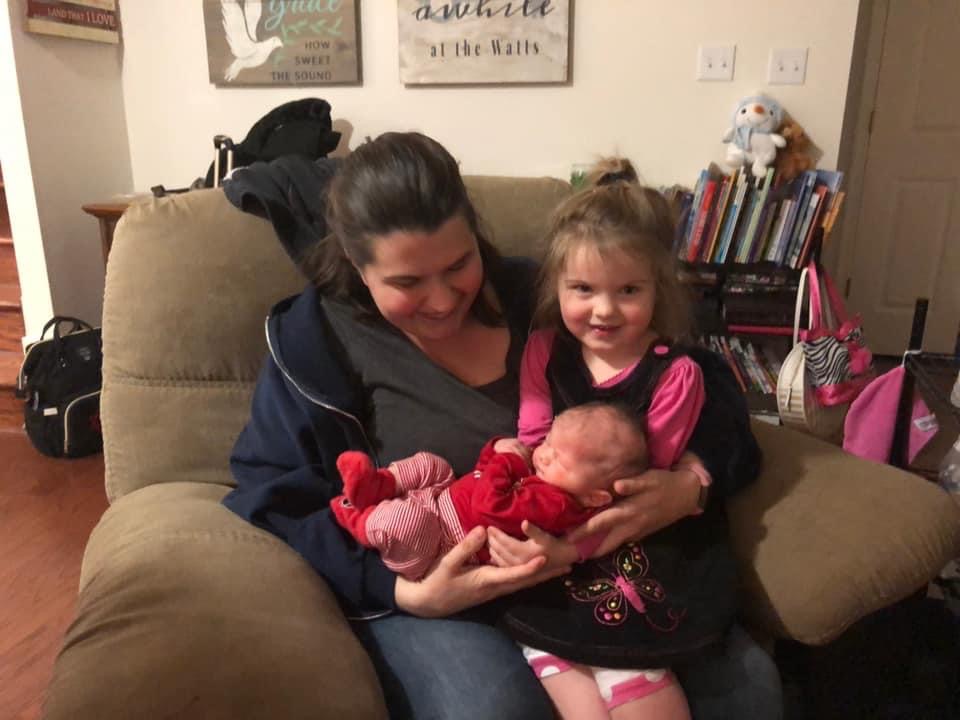
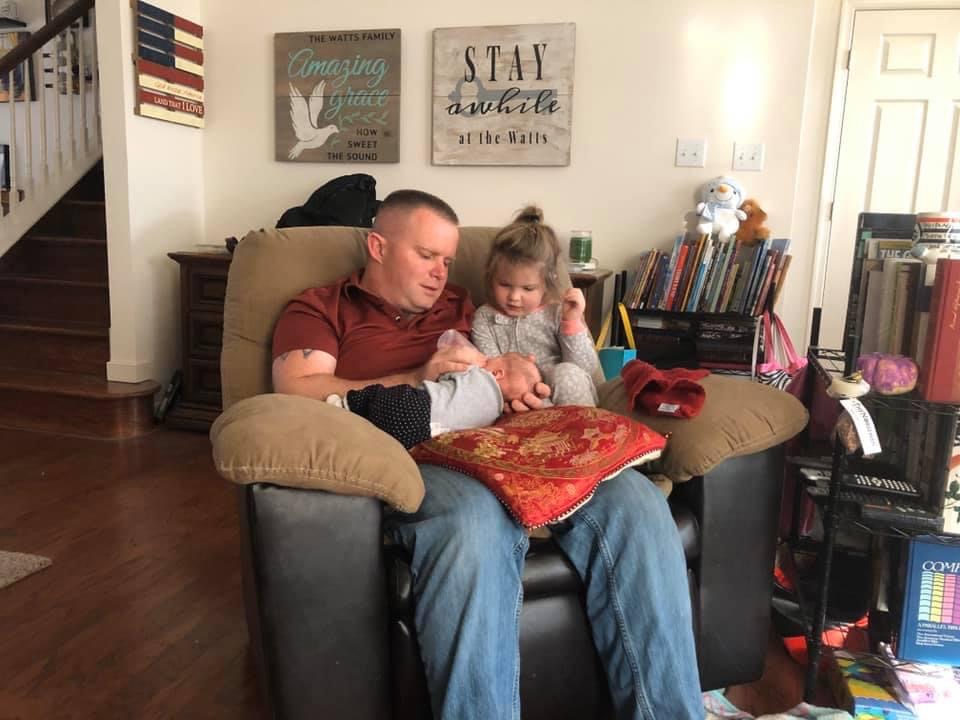
Once the Watts family was back at home, Michael googled Goltz syndrome. He quickly found the National Foundation for Ectodermal Dysplasias (NFED). After a few months had passed and their lives had settled, Jodi searched social media and discovered the NFED’s private Facebook group for Goltz families. Little did they know at the time how much these resources would be lifelines for them in Katherine’s journey with Goltz.
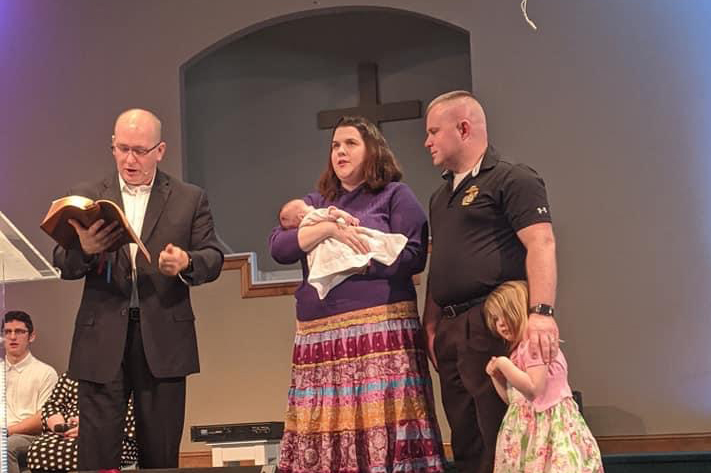
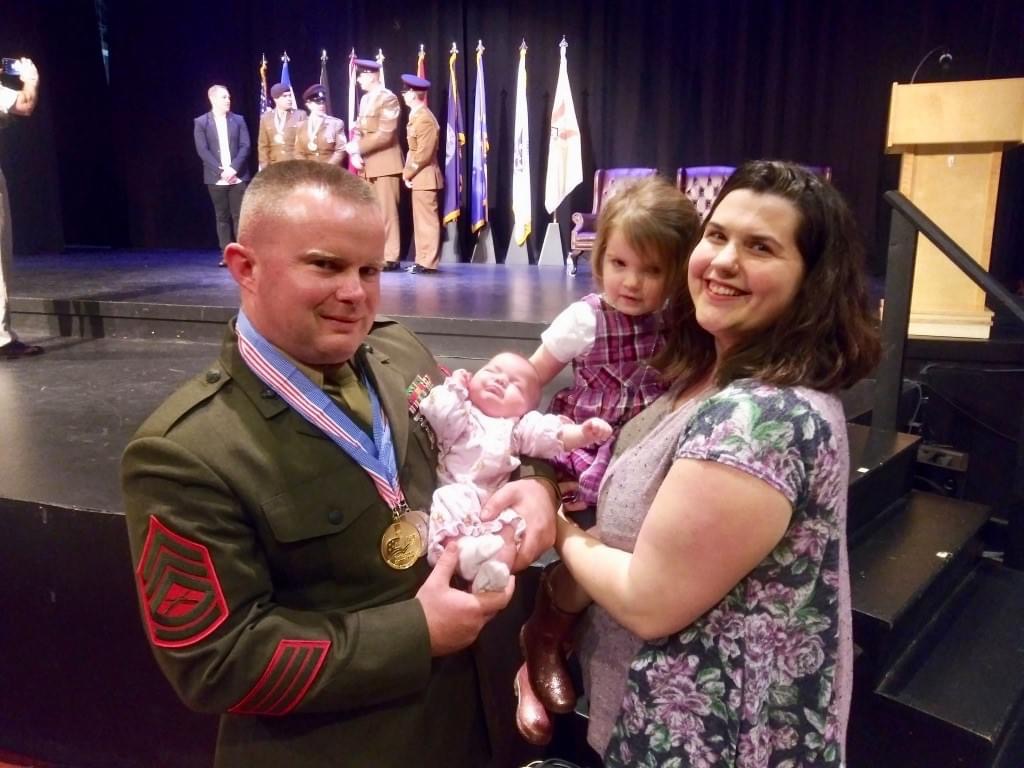
This story is part one of a two-part story. Read part two to read about what life is like for a toddler with Goltz syndrome and how attending the NFED Family Conference in July impacted their lives.
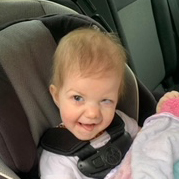
Thank you for sharing Katherine’s story! I’m anxious to see how she is doing as a toddler in Part I! Your comment about her loving people and loving to be the center of attention reminded me of my three-year-old daughter. She has been fun and funny and full of life since she was just a baby. Unlike Katherine, her/our journey with Goltz Syndrome only began just before she turned two, when we started to put the “pieces” of her symptoms together. NFED was the first resource we found to help us on this journey, and they were instrumental in providing us with the information and resources we needed. Goltz babies are literally one in a million. Katherine is a treasure.
I want to forward this to a doctor friend of mine.
We would love for you to share this article and increase awareness around Goltz syndrome. The best way to share would be to send the link to the blog to your friend: https://nfed.org/blog/little-girl-with-goltz-syndrome-is-born-a-fighter/. Thanks!
Reading this hit home for me . I’m currently battling medical staff and child protective services due to my daughters condition and that it’s so rare there’s not many cases and it’s hard to tell them because it’s my word against theirs . Does your beautiful daughter have a g tube or anything to gain weight ? Or does she have weight problems . I’m not looking for my daughter to get a g tube as she eats on her own but would love to hear what other family’s have gone threw/experienced . My daughter is 15 months old her name is Amelia and it feels like I’ve had to defend her since day one which blows my mind . I loved reading this and thank you very much for sharing
Hi, Sarah! I’m so sorry to hear about your challenges with Amelia’s weight. We do offer a couple of resources about this, which you can access at the following links:
https://nfed.org/learn/library/ectodermal-dysplasias-can-affect-growth/
https://nfed.org/learn/library/failure-thrive-ectodermal-dysplasias/
Of course, we always recommend discussing these concerns with your doctor(s). Please let us know if you have any other questions. Feel free to email us at info@nfed.org.
Best,
Veronica